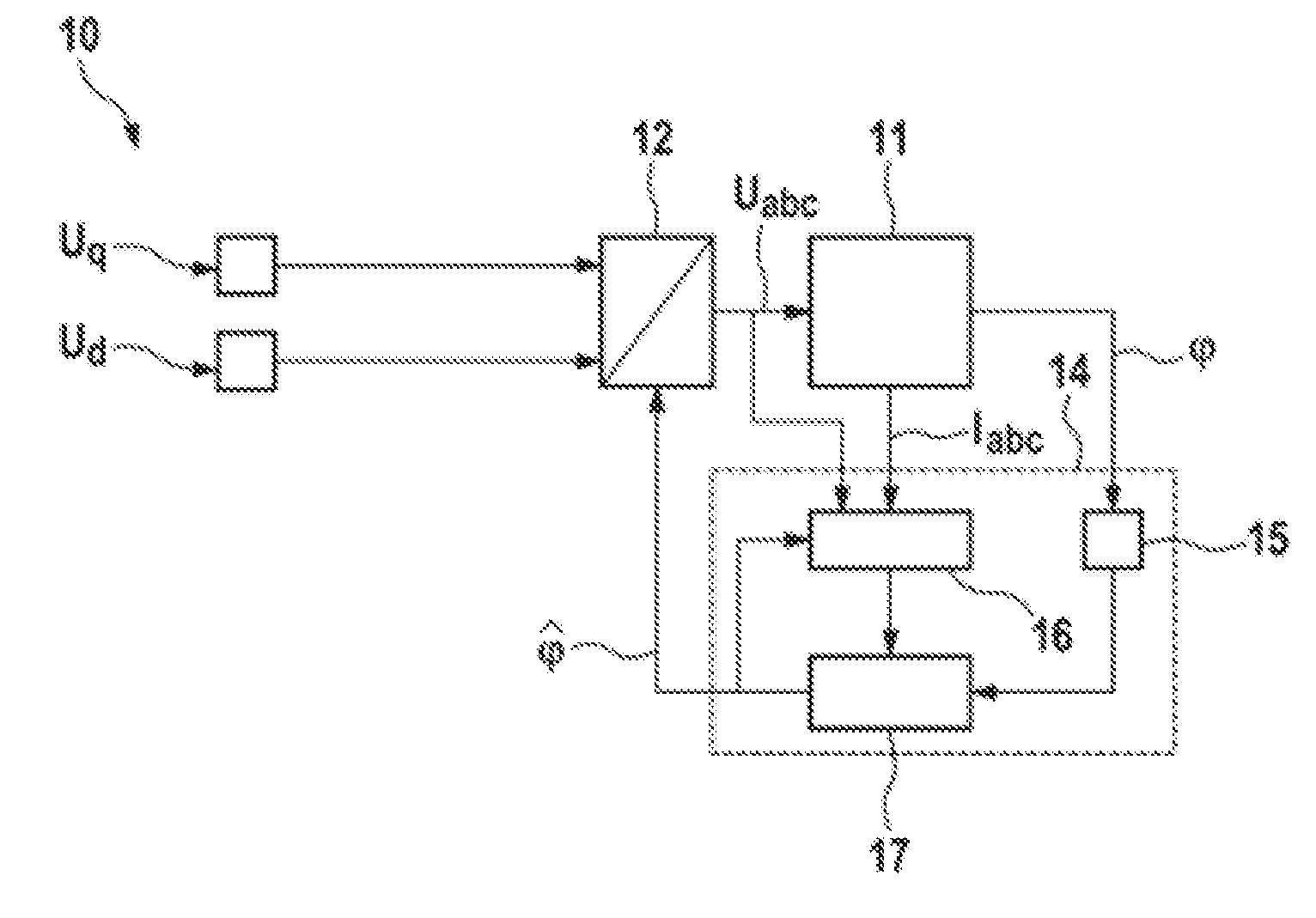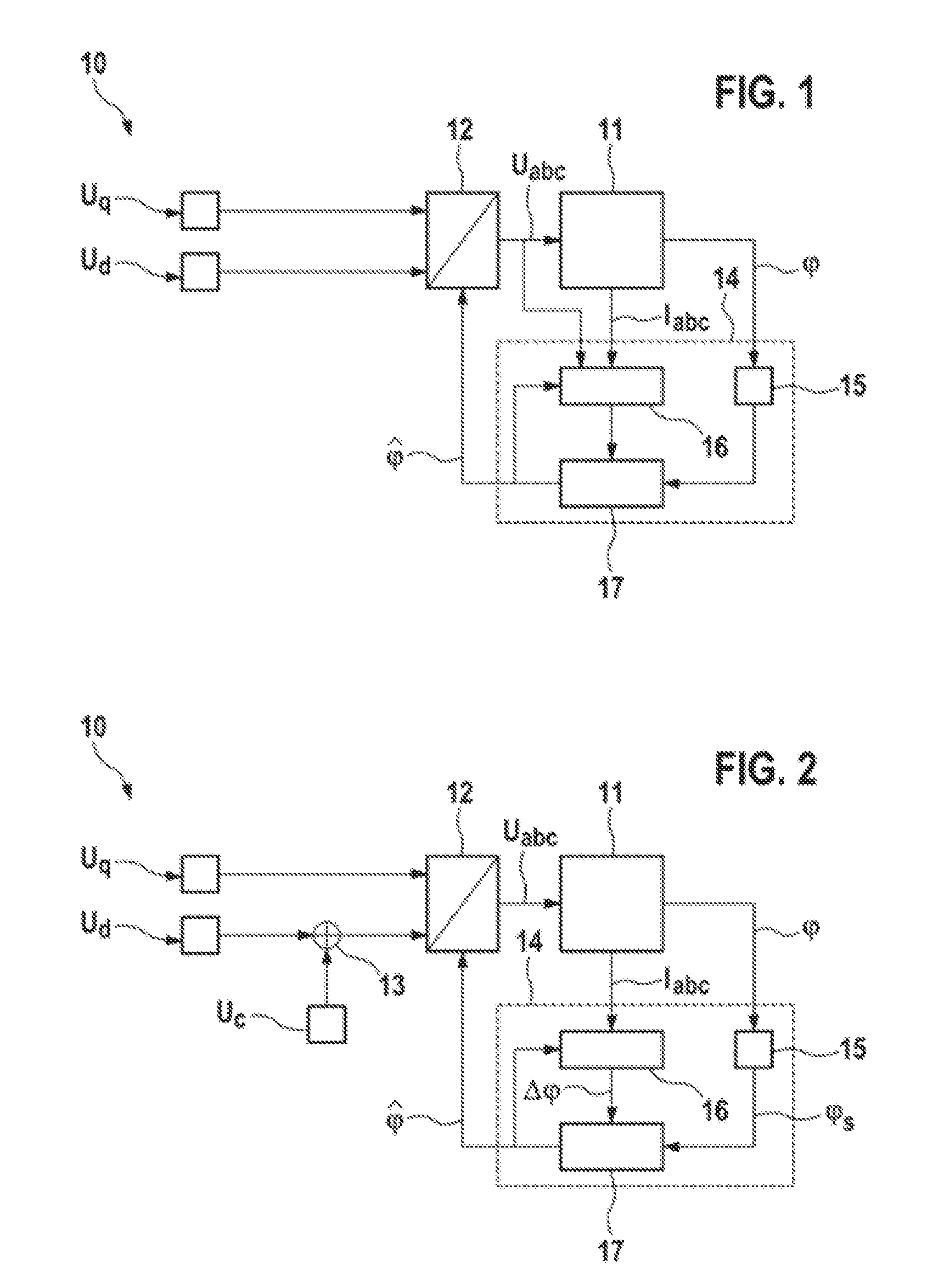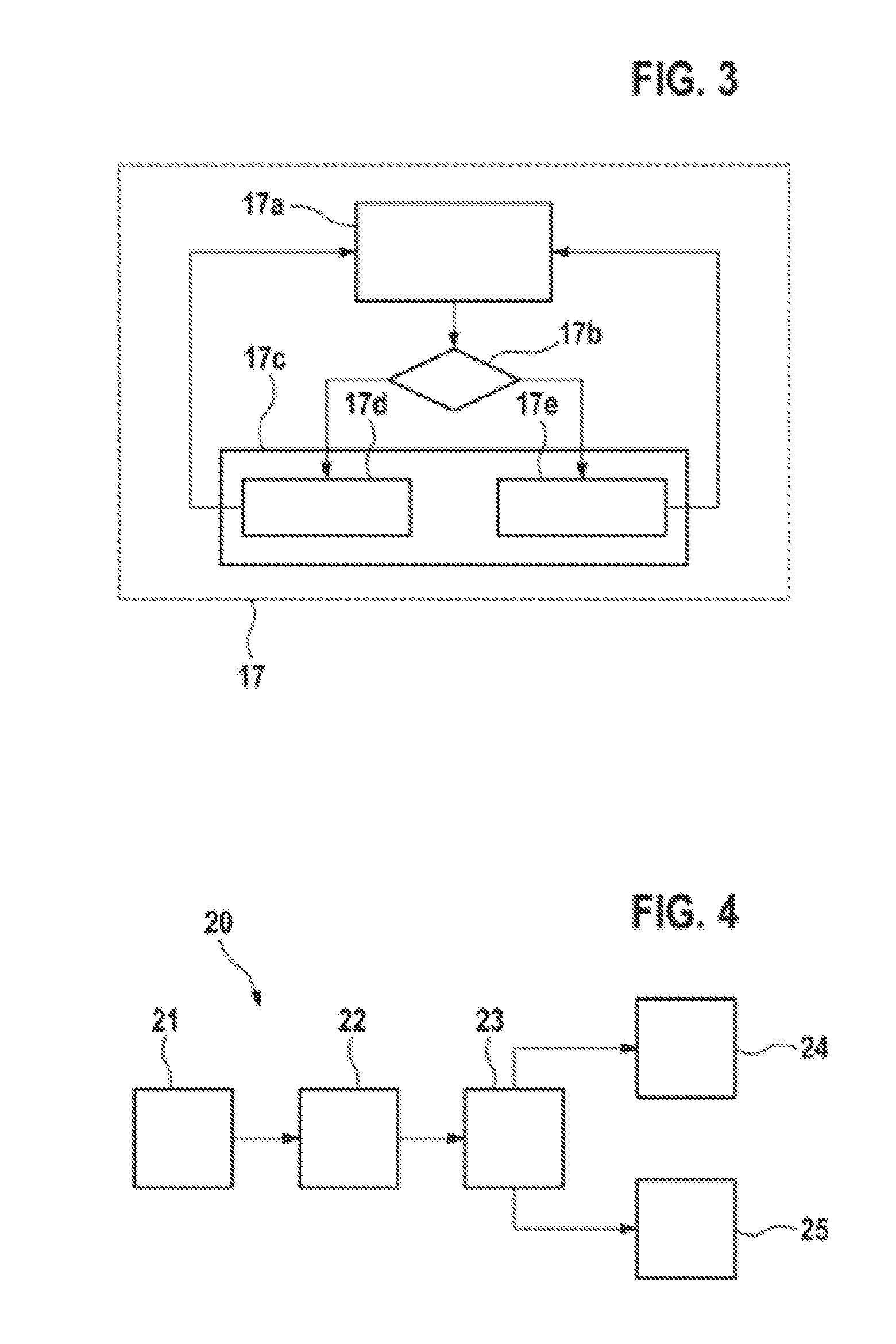Method and apparatus for estimating angles in a synchronous machine
a synchronous machine and angle estimation technology, applied in the direction of electronic commutators, dynamo-electric gear control, dynamo-electric converter control, etc., can solve the problem that the safety requirements imposed on the electrical drive of an electric vehicle or hybrid vehicle cannot always be guaranteed when using sensorless methods, and the increase of the cost of producing electrical drive systems, etc. problems, to achieve the effect of robust angle estimation and detection of fluctuations in the update frequency of measured values
- Summary
- Abstract
- Description
- Claims
- Application Information
AI Technical Summary
Benefits of technology
Problems solved by technology
Method used
Image
Examples
Embodiment Construction
[0020]FIG. 1 shows a schematic illustration of a system 10 for estimating angles in a synchronous machine 11. In this case, the synchronous machine 11 may be a permanent-magnet synchronous machine, for example. The three-phase supply voltage Uabc for the synchronous machine 11 may be provided via a supply voltage device 12. In this case, the supply voltage device 12 may have a transformation device which can be used to transform supply voltage signals Uq, and Ud from a rotor-fixed d-q coordinate system into a stator-fixed coordinate system. The output signals from the transformation device may be supplied to a PWM signal generator which controls an inverter included in the supply voltage device 12. The three-phase supply voltage Uabc can be delivered to the synchronous machine 11 via the inverter. In this case, the torque of the synchronous machine 11 and the formation of magnetic fields by the synchronous machine 11 can be regulated using the supply voltage component Uq, whose volt...
PUM
 Login to View More
Login to View More Abstract
Description
Claims
Application Information
 Login to View More
Login to View More - R&D
- Intellectual Property
- Life Sciences
- Materials
- Tech Scout
- Unparalleled Data Quality
- Higher Quality Content
- 60% Fewer Hallucinations
Browse by: Latest US Patents, China's latest patents, Technical Efficacy Thesaurus, Application Domain, Technology Topic, Popular Technical Reports.
© 2025 PatSnap. All rights reserved.Legal|Privacy policy|Modern Slavery Act Transparency Statement|Sitemap|About US| Contact US: help@patsnap.com



